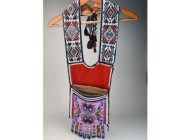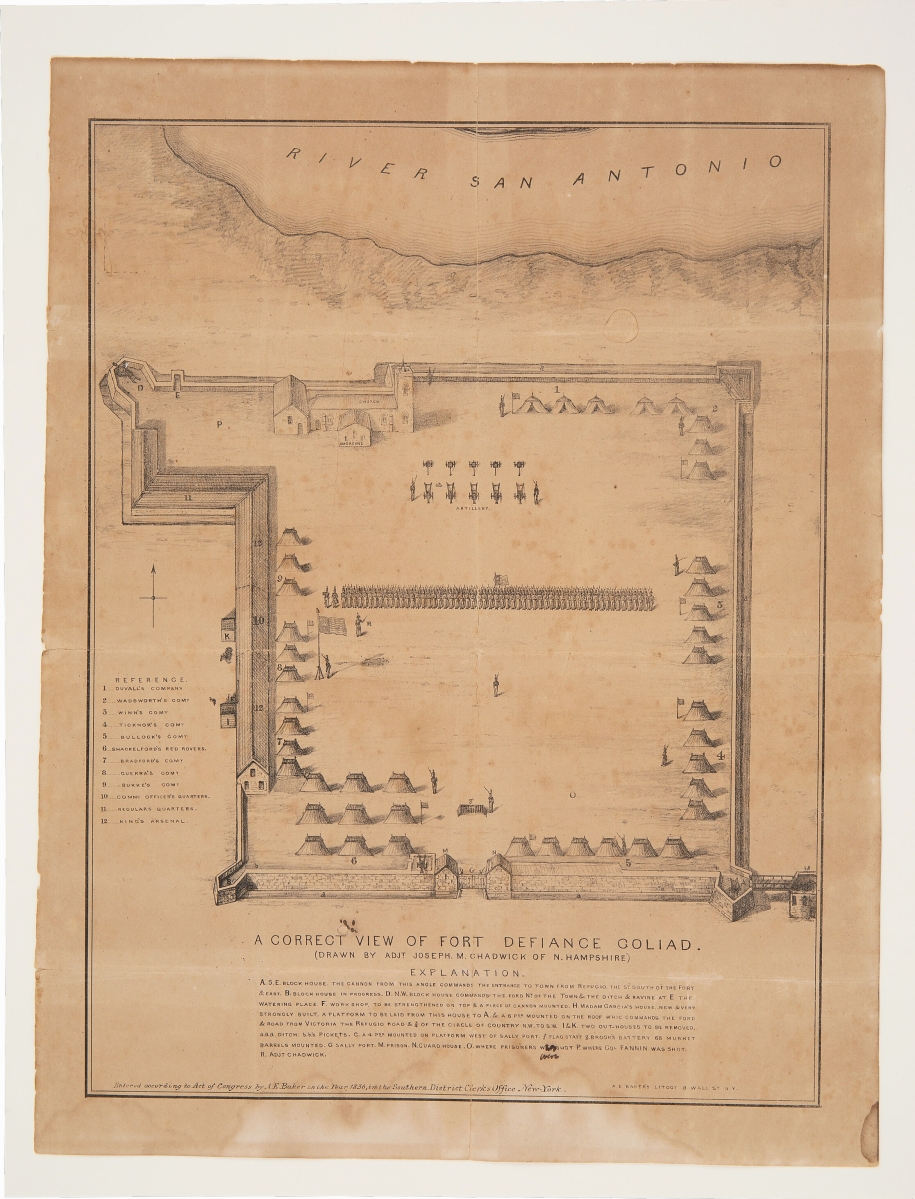
“A Correct View of Fort Defiance Goliad, Drawn by Adjutant Joseph M. Chadwick of N. Hampshire,” lithograph print published in 1836 by A.E. Baker, 8 Wall Street, New York City, that depicted Colonel James Fannin’s defenses at Fort Defiance. The 13¾-by-18-inch map is the only known printed version and saw competition from multiple bidders; it led the sale, bringing $250,000 from a private American collector bidding on the phone.
Review by Madelia Hickman Ring, Catalog Photos Courtesy Heritage Auctions
DALLAS, TEXAS – Heritage Auctions’ Americana and Political Signature sale on February 28 featured 548 lots, was more than 98 percent sold and achieved a total of $1,695,964. All manner of historical and political Americana crossed the block, bringing surprising results across the board, from maps to flags to buttons as well as printed ephemera that were witness to history in the making.
“It was a really great auction for us. We really exceeded our estimates,” Curtis Lindner, Heritage Auctions’ director of Americana said after the sale.
It was fitting that an item pivotal to early Texas history – a rare and early Nineteenth Century map from the Texas Revolution – was the top lot of the sale. The only known published map of Colonel James Fannin’s defenses at Fort Defiance in Goliad sold for $250,000 to a private collector bidding on the phone who prevailed against two online bidders and two other phone bidders. The map was a printed version of one that had been drawn in 1836 by Fannin’s adjutant, Joseph M. Chadwick of New Hampshire on the eve of the massacre at Goliad that killed Fannin, Chadwick and about 400 men; it was one of several incidents – along with the fall of the Alamo – that rallied Texans to ultimately rout General Santa Anna’s army at San Jacinto. It was also one of the last documents Chadwick sent his family, who had A.E. Baker of New York City publish it in presumedly very limited number.
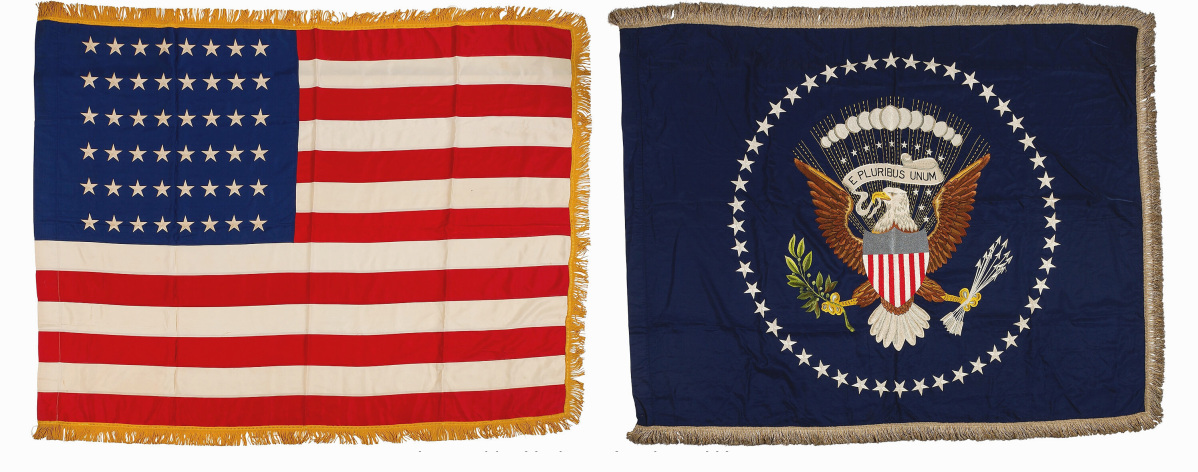
“We thought those would do well; we did not expect them to go that high though,” Curtis Lindner said of this set of Oval Office flags. Most presidents receive a single two-flag set during each administration; President Eisenhower received three sets – the 48-star flags from his first two terms and the 49- and 50-star flags during his second term. Hand-painted on silk with gold and silver bullion fringe, the set makes a striking impression and inspired heated competition, finally selling to a private collector on the East Coast, who was bidding online, for $81,250.
The original map and printed copy offered by Heritage were not known to exist until the Chadwick family allowed it to be published in an article on Chadwick’s relationship with artist George Catlin, which appeared in a 1966 issue of American Heritage magazine. Heritage was not aware of when the printed copy left the Chadwick family and the location of the original hand-drawn map is unknown. According to the catalog essay for the lot, no other example of the printed map is known to scholars of Texas history and it is not listed in Streeter’s Bibliography of Texas or any other reference work.
The map is significant for other respects. Since Chadwick’s plan lacked details, Baker added some features, including figures, according to the latest information available at the time. Incorporated into the published version was a flagpole and flag depicted on the original hand-drawn map featured a single star on a solid field with alternating horizontal stripes. It may be the first published representation of any flag representing the Texas revolution. The map had been professionally conserved and the conservation report accompanied the lot.
A two-piece set of both the hand-embroidered 48-star presidential coat of arms flag and the United States flag that had been in the Oval Office during the Eisenhower administration from January 20, 1957 to July 4, 1959 flew to $81,250 from an online bidder. The flags, which were hung on poles behind the president’s Resolute Desk, are replaced every four years. Once the flags are retired, they become the property of the National Archives and Records Administration, which typically sets them aside to be housed in a Presidential Library. Presidents receive two sets if they served two terms; in the case of these flags, they were replaced by the 49-star flags in 1959 so Eisenhower received 48-star flags in his first term and the 49- and 50-star flags during his second term.
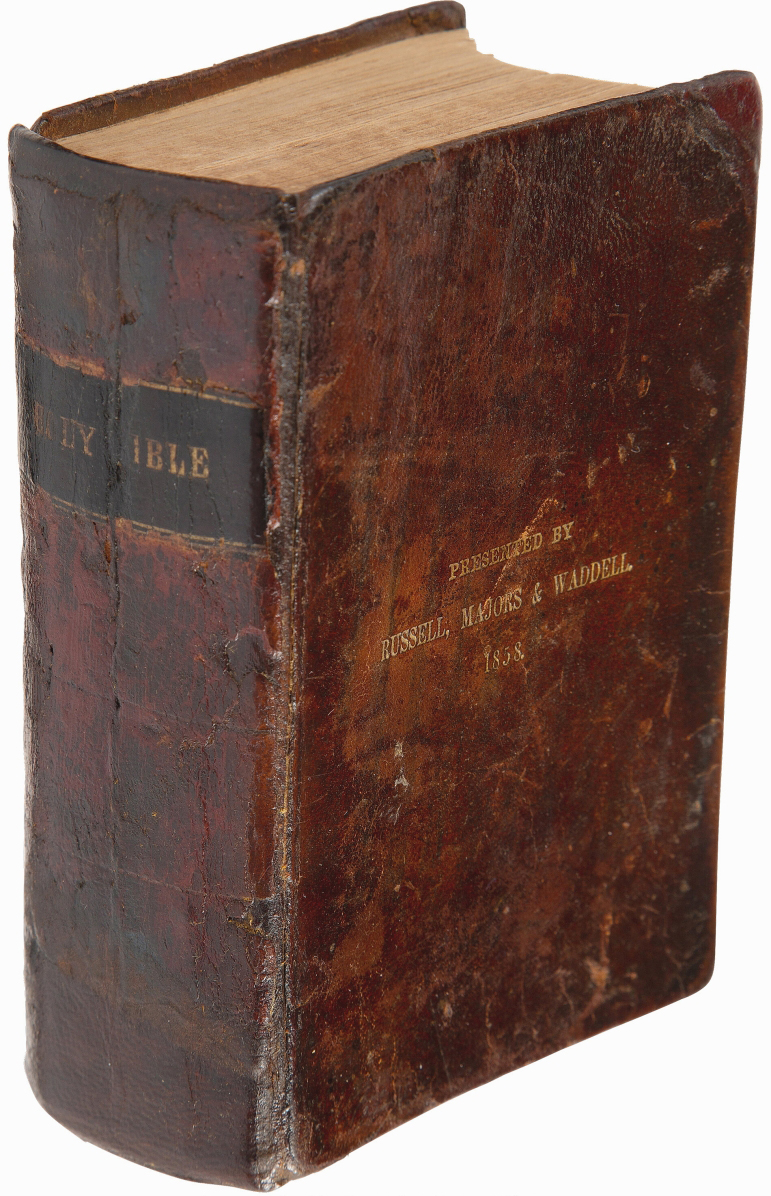
This 1858 leather-bound Pony Express Bible is one of few surviving examples from an original print run of 300; 12 others are in institutional collections. With history in the McGaugh family of Missouri, bidders chased this to $75,000, which Curtis Lindner called “a very nice surprise.” It sold to a Midwest private collector who was bidding online.
Since President Eisenhower already received the 48-star flags from his first term, the White House staff returned this set to the Flag Mission, who returned them to the Quartermaster for disposition. This set was then given to Ludwell B Pruett by his commanding officer, Lieutenant General Andrew T. McNamara, Quartermaster General from June 1957 to June 1961. Pruett would continue to work in the Flag Mission until 1961.
A Pony Express Bible – one of just a handful of surviving copies from the original print run of 300 volumes – brought $75,000 from a private collector in the Midwest who was bidding online. Nineteenth Century inscriptions inside the front and back covers connect this Bible to the McGaugh family, a well-known name in Missouri at that time. According to the catalog, 12 of the existing copies are in institutional hands with only a few believed to be in private hands. Bancroft Library at the University of California (Berkeley); the Society of California Pioneers (San Francisco); the California Historical Society (San Francisco); the Mormon Station State Historical Monument (Genoa, Nev.); the State Historical Society of Colorado (Denver); and the Nebraska State Historical Society (Lincoln) are among the institutions with a copy, which was bound in leather with gilt lettering reading “Presented by Russell, Majors, & Waddell 1858.”
Another relic from early Western American history was a Gold Rush-era gold standard balance scale by Howard & Davis of Boston that came in its original wood and glass case and was accompanied by the original brass pans and trays, copper scoop with brass counterpoise weight, leather-covered weight box and an assortment of associated items. Considered the preeminent Gold Rush balance, miners claimed they were accurate enough to precisely measure a pencil mark. An internet bidder tipped the scales at $27,500.
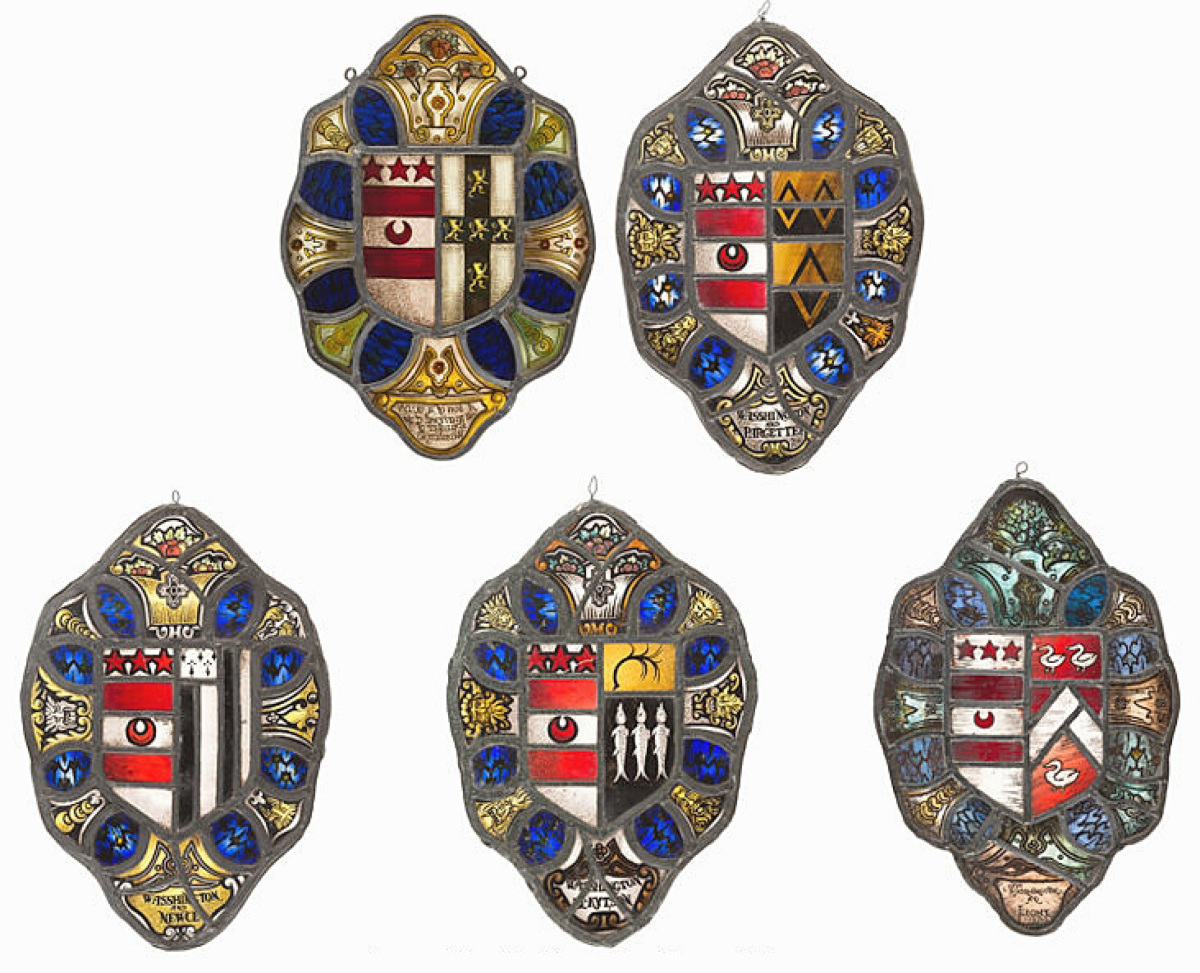
A buyer on the East Coast paid $31,250 for this replica set of five stained glass window panels with armorials depicting the various marital alliances of George Washington’s English forebears; it is one of only a handful of replica sets known to exist.
In the 1920s, a limited number of sets of stained glass armorial marital badges for the Washington family were made, replicating an original set of Seventeenth Century English badges. A set of five stained glass window panels, each measuring 12 by 18 inches, sold to a private collector on the East Coast for $31,250. The original panels were issued to commemorate the marriage of Washington family members, forming alliances that would enhance the wealth and influence of each. Other examples of this set of panels are at Sulgrave Manor in England, a private home in Somerset County, N.J., “Virginia House” in Richmond, Va., and the White House. The seller of the set offered at Heritage said they had been acquired at an estate sale in England.
Perhaps the most unusual – and surprising – result came for a collection of 55 small “George Washington” buttons, all made in the late Eighteenth Century, that was from the estate collection of noted coin collector Donald G. Partrick. Partrick’s coin collection crossed the block at Heritage on January 21 and set a record for any gold coin made in the United States when Partrick’s 1787 “Brasher doubloon” realized $9.36 million. Heritage opted to include Partrick’s name in the cataloging for the buttons and the decision paid off. “We had a lot of coin guys bidding on those. They doubled and tripled our estimates; there might even be a couple of records in there,” Lindner said. Leading the selection of buttons was a “GW with indentee” button that brought $30,000. A button with dotted script took $20,000, one with a cross in the circle finished at $18,750 and a plain Roman button made $15,000.
Images of United States presidents continue to resonate with bidders, regardless of medium. A portrait of Chester Alan Arthur rendered on a KPM-style porcelain plaque brought $21,250 from an online bidder, while a phone bidder paid $13,125 for an ambrotype of Abraham Lincoln from the 1860 election. Thomas Jefferson’s likeness, rendered in miniature and signed “Caban” was dated to the late Nineteenth Century and sold to an online bidder for $11,250, just outpacing a small oil portrait of Andrew Jackson done by Ralph E.W. Earl (1788-1838) after the portrait of Jackson by Samuel Lovett Waldo. It brought $10,625 from an online bidder.
Heritage Auctions’ next sales of similar material will be the Western Collection of Michael Ward on April 17 and the Political Memorabilia collection of Tom Huston in late May.
Prices quoted include the buyer’s premium as stated by the auction house. For information, 214-528-3500 or www.ha.com.





















